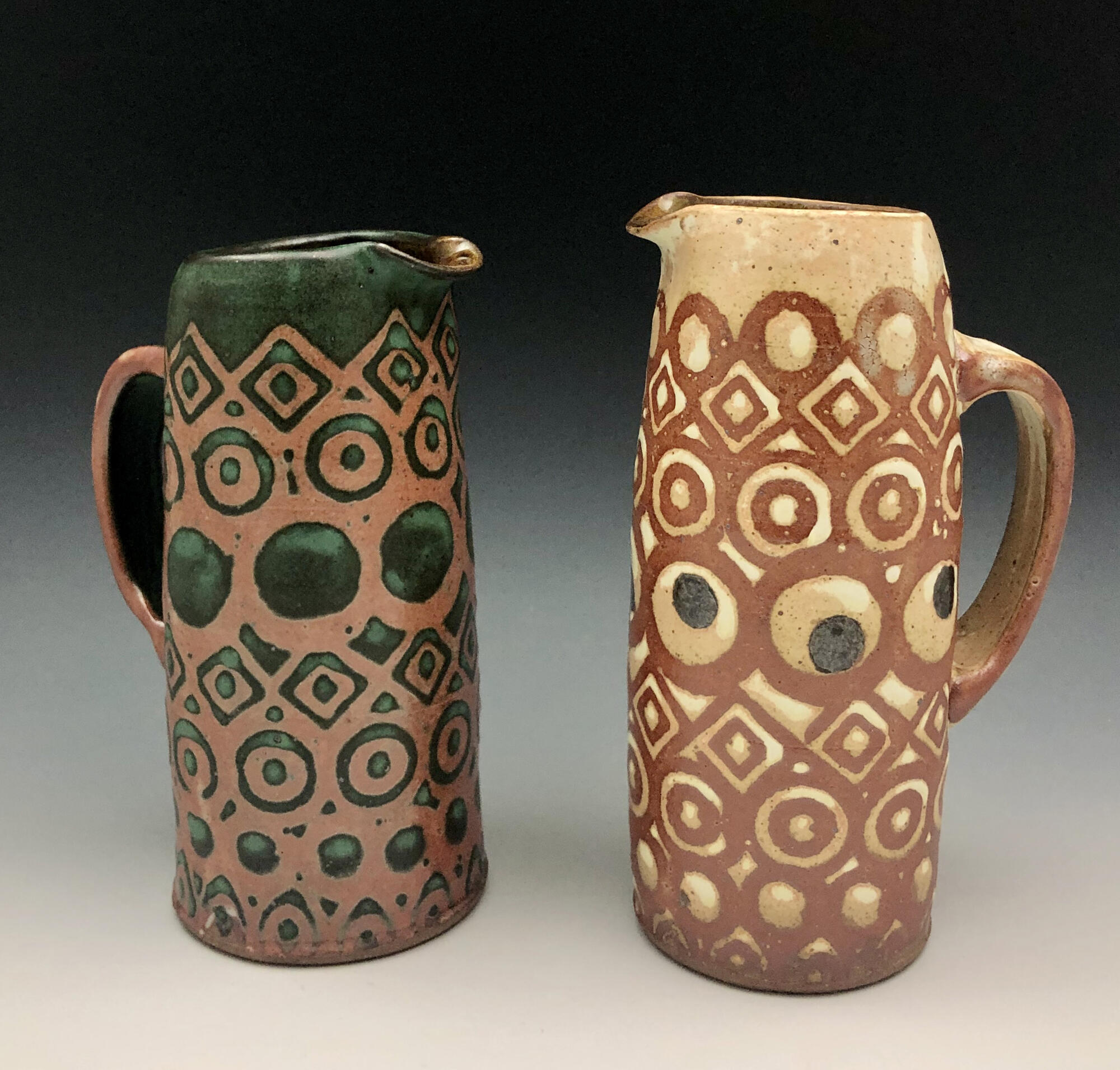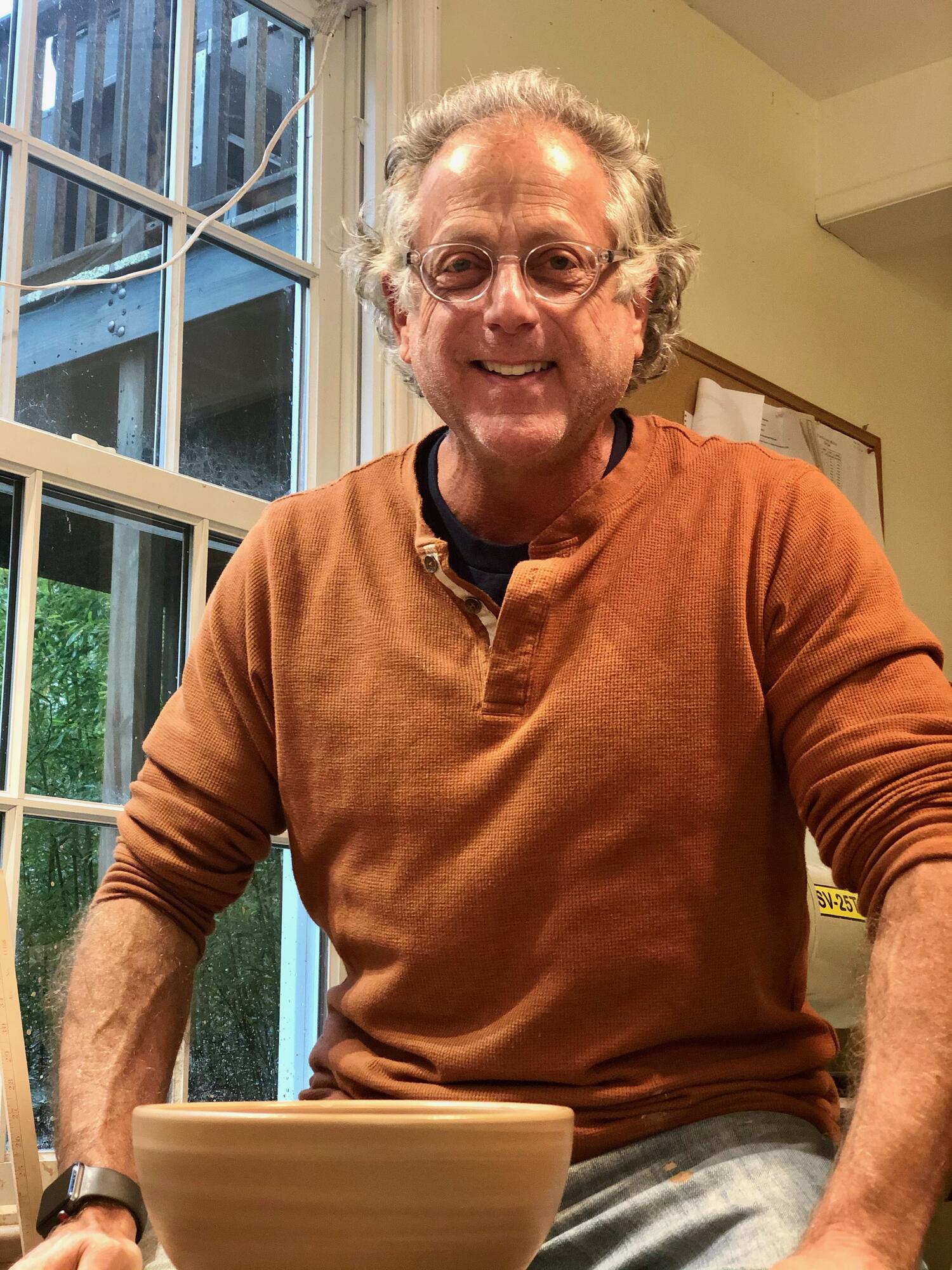 The Provincetown potter and educator will offer ceramics sessions featuring unique approaches that provide "creative trailheads to wander down" with functional pieces.
The Provincetown potter and educator will offer ceramics sessions featuring unique approaches that provide "creative trailheads to wander down" with functional pieces.
By Kathy King
Director of the OFA Ceramics Program at Harvard
Studio potter and educator Paul Wisotzky of Blueberry Lane Pottery is a new addition to the lineup of online visual arts offerings this spring. Wisotzky will be teaching the course, Circle, Square, Oval – with two, six-week sessions that begin February 2 and March 23. This course is open to all levels and will feature demonstrations of creating functional work both on and off the potter’s wheel. Wisotzky will present his unique method of creating stamps with his laser cutter to apply decorative patterns to his functional work, which has been featured on the Ceramic Arts Network. Wisotsky uses graphic-design software, a laser cutter/engraver and a polyurethane sponge to produce incredibly precise and intricate sponge stamps to apply glazes, slips,and wax resist.
All on-line offerings with the Harvard Ceramics program are open to Harvard students, staff, faculty and the general public (18+). For local students, the purchase of clay, firing and glazing serves to compliment each course experience. Kathy King, director of the OFA Ceramics Program at Harvard, spoke with Wisotsky recently about his background and studio practice. An edited version of their conversation follows.
students, the purchase of clay, firing and glazing serves to compliment each course experience. Kathy King, director of the OFA Ceramics Program at Harvard, spoke with Wisotsky recently about his background and studio practice. An edited version of their conversation follows.
Paul, you will be teaching from your studio in Truro, Massachusetts. How did you end up setting up your studio there?
I love Truro. I have always felt like my soul lives here, and I always wanted to live here. I grew up in Lexington and fell in love with making pots as a student at Lexington High School. I spent most summers in Truro as my family had a summer home here. Just down the road from my parent’s house is Truro Center for the Arts at Castle Hill. I would take summer workshops in clay there as a teenager and young adult, so it is also place where a significant amount of my early clay education took place. When I became a full-time potter around 15 years ago I was living in San Francisco and setting up a studio there was out of the question for many reasons including money. I realized that in Truro it would be possible for me to set up a studio and build the life centered around clay that I had always dreamed of. I’ve been here for 14 years now and revel in the beauty and wonder of nature that surrounds me. My dream has come true.
Your functional work is very surface oriented, who or what has been influential in how you approach the marriage of form and surface in your work?
The surface of a pot is like a piece of fabric for me. Fabric moves with whatever object it is covering. I want the surface of my pots to move or have a sense of movement about them. Fabric also can accentuate form. It can draw attention to beginnings and endings. It can accentuate and define a curve or a line or in the case of clothes body parts. And how often do we refer to a functional piece of pottery as having body parts - a shoulder, a hip, a foot. My goal and hope are that my surface design and decoration do the very things that fabric can do to my pots.
Of late, with the work I’ve been doing with the sponge stamps I make, I’ve also been exploring patterns. Right now, I’m very inspired and drawn to African and Indian batik fabrics – their use of geometric shapes in patterns. Also, because I’m using a lot of wax resist to layer glazes and slips, I’m drawn to the same technical method of batik and how wax is used in that process.
How does this affect how you envision your pots in everyday life?
I want my pots to be used, and I make them for everyday use. I don’t want the shape or the design of the form to get in the way of straightforward functionality. Surface is a way for me to take relatively straightforward and traditional functional forms and make them extraordinary, energetic and alive. I like to think about my pots as a beauty to behold as well as to hold.
What are you the most excited about sharing with our students during your class?
I’m excited to share how I make and what I do with my pots as a way of inspiring each participant in their own work and creative self-expression. I’m looking forward to helping participants expand their toolbox of skills through new shapes and an exploration of surface design and technique. I’m excited to offer participants the opportunity to work with the sponge stamps I make and to teach them how to use them and then see how they use them in their work. I want the experience to unlock ideas, creativity and self-expression. A primary goal of all my teaching is for each participant to identify exciting new creative trailheads to wander down as they move forward in their own work with clay.